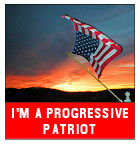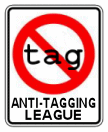Keeping a Watchful Eye on the News
A few days ago, I wrote a short post about a news clip of US soldiers crushing an Iraqi taxi with a tank in retaliation for looting some wood. To be honest, I figured the comments - if there were any at all - would be of the "that damned war" variety. It turns out the comment thread opened a dialog that wandered into several areas you might not immediately expect and those areas painted a picture we can all learn from.There are many communications theorists who posit that visual information is inherently different than the written word. At the center of these theories is the notion that humans attach more significance to visual messages than to those they can only read or hear. One common example is a photo or video of a small crowd.
Filmed from the top of a high building, a crowd of 50 people on a large city street looks like a paltry showing. That's because you can see it within the context of the area around it - the street, other buildings, cars, etc. There are no faces and you can see no emotion. Nothing about it really jumps out when you view it. The opposite might be true of a huge demonstration, for example on the Washington Mall. The sight of millions of bodies crammed into a tight space speaks to us with more emotion merely because of the same differences in scale.
But look at the small demonstration again from crowd-level. You can't see just how big the crowd really is - 50, 500, 5000 - there's no way to tell. The closeup shots of a few people chanting and waving signs at close range is much more visceral than when viewed from the building. At this level, you can see emotion and tension that's largely absent from the high building shot. You no longer perceive this as a distant event, but one in which you're actually participating. You reflect the emotion you see.
From either vantage point, the facts are the same, but how they're presented can make a crucial difference. Is image selection some sort of an attempt to bend the truth? It could be, but it's more likely that you'll see the more exciting images simply because they're more interesting. Would you watch news about the crushed car if it was covered solely by officials in a press tent relaying the facts or would you be more drawn by the pictures of the event itself? If you were the type to be outraged over the event, would you have mustered that emotion from a few straight-faced people in front of a curtain? Probably not.
How do you separate the facts from the emotion?
Several of the commenters alluded to a successful strategy - context. They pointed out that if they'd viewed the footage in a movie they might have thought it was "cool" in the sense that it was striking rather than a statement about a horrible event. Other viewed the clip context of a family's livelihood being squashed like a bug. To them, the same footage wasn't "cool" but sad, or angering, or both. In other words, some commenters forced themselves to take context into account rather than just relying on the raw images.
But what about what's missing from the context?
We know the video showed the family being punished for looting wood. However, we know nothing of the circumstances. Was this the 10th time the family had been caught or the first? Had looting caused a bigger than normal problem in the neighborhood, forcing GIs to take more violent action? Would the soldiers have crushed the car if they'd known beforehand that it was the family's sole means of support? And what about the justness of the punishment? What were the soldiers told to do and who decided to do it?
The truth is that you can't make a truly informed judgment about the video because you simply don't know enough about the context. If you're a smart consumer of news you have two options at this point. One is to accept it at face value, but know the limitations of what you've viewed. The other choice is more critical. Find another account of the incident, preferably a written one that doesn't carry so much of the emotion that visuals have, and see if that source can fill in some of the contextual blanks.
We often gripe about our information sources being biased or selective in the truths they tell. There may be dozens of reasons for this perception and many of them probably have nothing to do with a blatant attempt to cherry pick the facts. It takes very savvy news consumers to be able to cut through those interruptions and see the nuggets of truth in the middle. We must always be on guard against forming completed notions about events without taking the time to validate the facts. Read newspapers, watch the news, listen to the radio, watch Jon Stewart if you like, but don't depend on any of these sources as your only one. Because if you do, you'll only get some of the facts and we've got a shooting war to show what happens when you don't validate the facts before you act. Regardless of who has a knee-jerk reaction to an event, it's still a knee-jerk reaction. The right and left are equally guilty of too readily accepting one line of thought without question. That sort of attitude is not only counter-productive, it's dangerous.
So go ahead and watch what you want, read what you want, and listen to what you want, but before you go off half-cocked, make sure you know all the facts. We'll all be better off if you do.
Tech Tags: media politics omnipotent+poobah
Truth Told by Omnipotent Poobah, Tuesday, July 18, 2006







